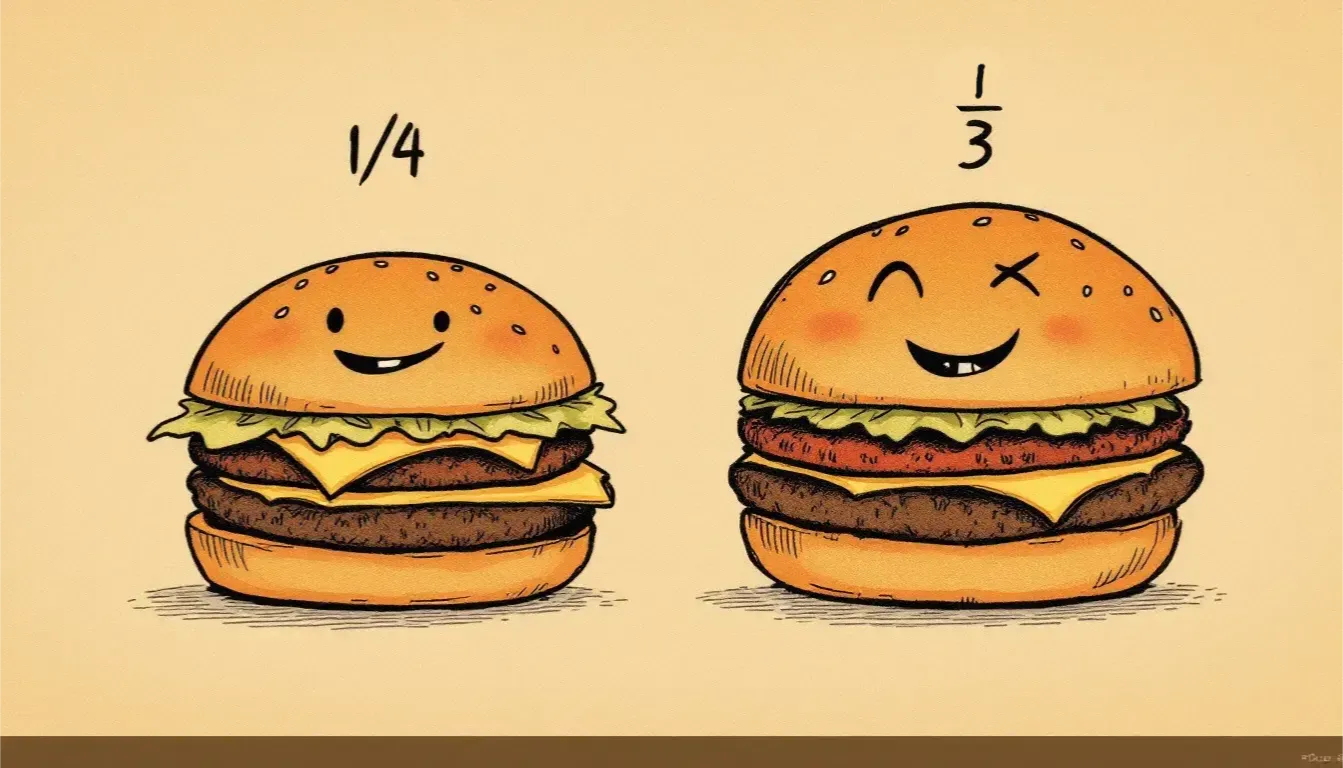When Bigger Looked Smaller

Rea,
Good luck with your percentages board game today! Fractions and percentages seem simple, but they can be surprisingly tricky for our brains. Even adults get confused when comparing fractions - sometimes leading to million-dollar mistakes.
You know McDonald’s, right? One of their famous burgers is the Quarter Pounder. The name comes from the weight of the beef patty - 1/4 pound (25% of a pound). For decades, this has been one of their most popular items.
In the 1980s, another restaurant chain called A&W wanted to compete with McDonald’s. If you haven’t heard of A&W, they’re similar but not as common. Their team had what seemed like a brilliant plan: create a bigger, tastier burger for the same price.
A&W launched their “Third-Pounder” burger. It used 1/3 pound of beef (about 33%), which meant more meat than McDonald’s burger. They used better ingredients, and in taste tests, people preferred A&W’s burger. It cost the same as the Quarter Pounder - more food, same price. It seemed like a guaranteed success!
But the Third-Pounder completely failed. Sales were disappointing, and A&W couldn’t understand why customers weren’t buying their bigger, tastier burger.
When they researched what went wrong, they discovered something surprising: many customers thought they were being overcharged because they believed 1/3 was less than 1/4. Since 3 is less than 4, they assumed a “third-pound” must be smaller than a “quarter-pound.”
The A&W team was shocked to learn that customers thought they were paying the same price for less meat. The reality was opposite - customers were getting more meat for the same price, but fractions weren’t intuitive to many people.
This mistake cost A&W millions in development, advertising, and lost sales. All because many people didn’t realize that 33% is more than 25%, or that 1/3 is larger than 1/4.
This story shows how our brains sometimes need help with numbers. We often process numbers based on what sounds bigger rather than their actual value. It’s like how a pound of feathers and a pound of rocks weigh exactly the same, but our instinct might tell us the rocks weigh more.
For businesses, scientists, and doctors, understanding percentages and fractions isn’t just about math class - it can determine whether products succeed, experiments work, or patients receive the right medicine.
Love, Abba

